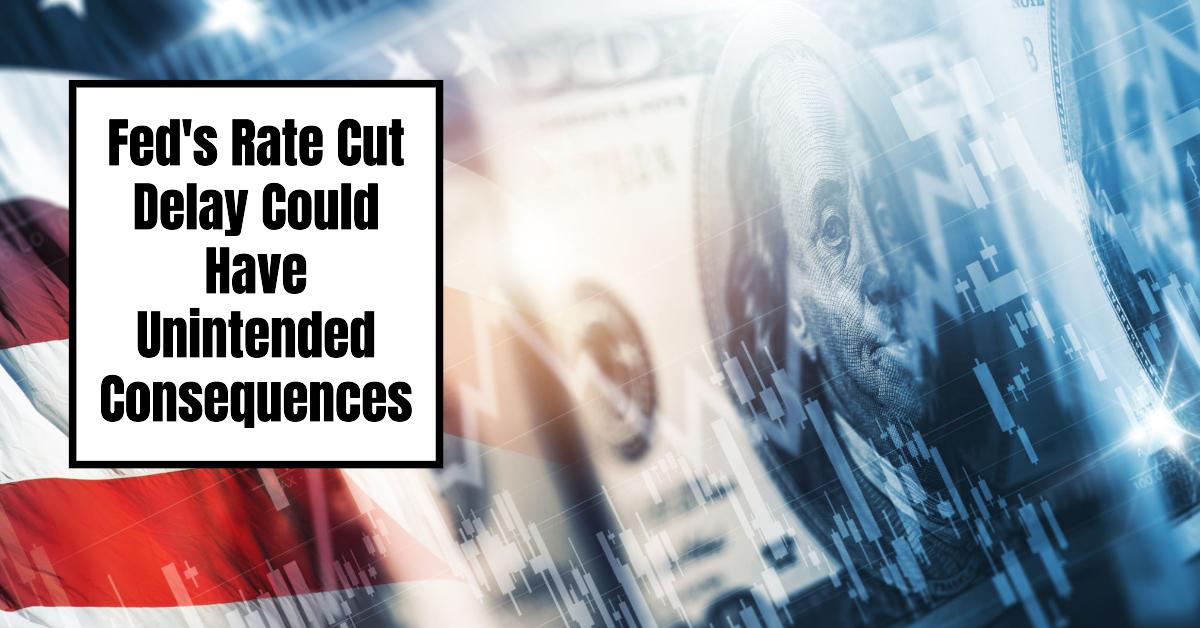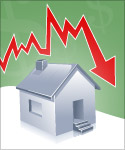The Federal Reserve's (Fed) decisions regarding interest rates send ripples through the global economy. While the Fed aims to maintain price stability and maximize employment, delaying a much-needed interest rate cut can have unintended consequences that impact businesses and individuals alike. Delayed rate cuts can stifle economic growth and higher borrowing costs discourage investment and spending.
Fed's Rate Cut Delay Could Have Unintended Consequences
Key Takeaways
- Interest Rate Delay: A delay in cuts can hinder economic growth by reducing consumption.
- Consumer Impact: Elevated borrowing costs continue to stifle consumer spending and confidence.
- Market Reactions: Financial markets may experience significant volatility due to uncertainty.
- The risk of recession increases: Prolonged high interest rates can tip a slowing economy into a recession.
- Inflation Concerns: Persistently high inflation rates could worsen if the Fed remains hesitant to act.
- Investment Hesitancy: Businesses may postpone investments due to uncertain financing conditions.
The Current State of Interest Rates and Inflation
As of now, the Federal Reserve is navigating a tightrope, weighing the appropriate approach to managing interest rates. The delicate balance between addressing persistent inflation and promoting economic growth is at the forefront of their discussions. With each meeting, the Fed examines prevailing economic indicators, including employment rates, inflation metrics, and consumer spending behaviors. Recent data shows that inflation remains elevated, challenging the Fed's ability to cut rates without risking further inflationary pressures.
According to a CBS News report, a delay in rate cuts can lead to increased borrowing costs, adversely affecting spending patterns across the economy. Consequently, the longer the Fed hesitates to cut, the more pronounced these consequences may become.
The Ripple Effects of Delayed Rate Cuts
1. Economic Growth Stagnation
One of the primary unintended consequences of not cutting interest rates is stagnation in economic growth. Higher rates discourage borrowing, leading to reduced consumption and investment. As consumers and small businesses cut back on spending, the economy may see slowed growth, which creates a vicious feedback loop. A recent analysis by Bloomberg highlights how these delays can have far-reaching impacts on economic activity, resulting in lower GDP growth rates.
This stagnation is particularly worrisome for sectors reliant on consumer spending, such as retail and hospitality, where delayed cuts can manifest as decreased foot traffic and sales figures.
2. Increased Cost of Borrowing
With the Fed's current delay in rate cuts, the cost of borrowing remains high. Consumers looking to finance a home or a vehicle find themselves facing elevated interest rates, complicating financial decisions. This has significant implications for the housing market, as potential buyers may hold off on making purchases due to uncertain financing conditions. According to Investopedia, higher borrowing costs can create an overall decrease in disposable income, as individuals prioritize paying off existing loans over new expenditures.
This situation particularly affects first-time homebuyers and those seeking personal loans, which could shift demand dynamics in critical market areas.
3. Financial Market Volatility
Financial markets thrive on certainty and predictable monetary policies. When the Fed delays rate cuts, it introduces uncertainty, leading to increased market volatility. Fund managers and investors adapt to changing expectations around economic growth, often resulting in sudden shifts in stock prices.
For instance, sectors that rely heavily on borrowing, such as technology and construction, may see their stock prices fluctuate dramatically as investors anticipate changes in the Fed's future actions. As noted in financial analyses, companies may face rising capital costs, leading to contractions or layoffs and stifling growth prospects.
4. Exacerbated Inflation
An indirect yet critical outcome of delaying interest rate cuts is the potential exacerbation of inflation. If consumers anticipate that interest rates will remain elevated, they may alter their spending patterns, creating unintended inflationary pressures. Businesses, in an attempt to counteract lower sales, might raise prices to maintain profit margins.
A recent commentary from PBS News asserted that the Fed's hesitation in lowering rates complicates its mandate of achieving stable inflation levels, suggesting that continued high rates could hinder the necessary normalizations.
Moreover, persistent inflation can shift consumer perceptions towards a more inflationary mindset, where even minor increases in prices cause panic and resulting shifts in purchasing behavior, further compounding inflationary pressures.
5. Stalling Business Investments
When businesses and investors perceive that high-interest rates will continue, they tend to delay or scale back capital investments. The uncertainty around financing options can inhibit growth initiatives, which could lead to workforce downsizing and diminished economic dynamism. This “wait-and-see” approach delays technological innovation and expansion within companies.
Recent articles from industry analysts suggest that many sectors are adopting this conservative outlook, leading to an overall decrease in innovation and job creation. According to the AllianceBernstein report, businesses are hesitant to pursue ambitious projects due to concerns about increasing financing costs, which ultimately stifles economic progress.
Conclusion: Navigating the Complex Terrain of Rate Cuts
The decision to delay interest rate cuts by the Federal Reserve is a critical juncture that can have far-reaching implications for the economy. While aimed at addressing inflation, the unintended consequences of these delays can impede economic growth, diminish consumer spending, and destabilize the financial markets.
Stakeholders—consumers, businesses, and policymakers alike—must remain vigilant and adaptive to these developments. A nuanced understanding of the economic landscape and awareness of possible outcomes will be essential for navigating the complex terrain ahead. The situation underscores the intricate balance that central banks must maintain; a decision made today can set off a chain reaction affecting various facets of the economy for years to come.
As we move forward, it is crucial for all economic participants to stay informed about the Fed's policy decisions and their broader implications to make wise financial choices in uncertain times.
FAQs
1. What is the primary reason for the Fed to delay interest rate cuts?
The Federal Reserve often delays rate cuts to combat persistent inflation and ensure that the economic environment remains stable.
2. How do delayed interest rate cuts affect consumers?
Delayed cuts typically lead to higher borrowing costs, reducing consumer spending and overall economic confidence.
3. What sectors are most affected by the Fed's decision to delay rate cuts?
Sectors such as real estate, consumer goods, and small businesses are heavily impacted due to increased borrowing costs and reduced consumer spending.
4. Can delayed rate cuts lead to increased inflation?
Yes, a delay could cause a cycle of increased prices as businesses attempt to compensate for lower sales stemming from decreased consumer spending.
5. How might the stock market respond to the Fed's delay in cutting rates?
Market volatility may increase as investors react sensitively to the uncertainty regarding future economic conditions and monetary policies.
ALSO READ:
Interest Rate Predictions for the Next 3 Years: (2024-2026)
Interest Rate Predictions for Next 2 Years: Expert Forecast
Interest Rate Predictions for Next 10 Years: Long-Term Outlook
When is the Next Fed Meeting on Interest Rates in 2024?
Interest Rate Cuts: Citi vs. JP Morgan – Who is Right on Predictions?
More Predictions Point Towards Higher for Longer Interest Rates



